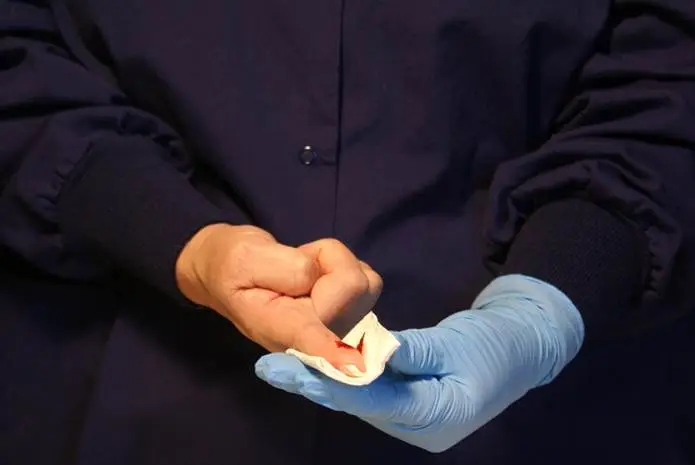Managing a Needlestick Injury: What You Need to Know
Imagine you’re working on a patient, and suddenly your employee says, “Ouch, I just got stuck!” Do you know exactly what steps to take to expedite first aid, prevent infection transmission, and ensure OSHA compliance? What if this happens when you’re not in the office—do your employees know exactly what to do?
According to the National Institute for Occupational Safety and Health, between 600,000 and 800,000 needlestick injuries occur in healthcare settings each year. In dental offices, The Dentists Insurance Company (TDIC) notes that needlesticks are the most common injury. An exposure incident occurs when an employee is punctured with an instrument that has been in contact with patient fluids, or when body fluids come into contact with the eyes, nose, mouth, non-intact skin, or result from human bites.
When an exposure incident happens, immediate action is critical to prevent infection transmission. Exposure to blood or body fluids carries the risk of contracting serious infections, such as Hepatitis or HIV.
OSHA Requirements and Your Exposure Control Plan (ECP)
The OSHA Bloodborne Pathogen Standard mandates that all employers must have a written Exposure Control Plan (ECP). This plan should be personalized to fit your practice’s policies and procedures, and employees must be trained on it at least annually. If you don’t have an ECP, you can access model plans and programs on OSHA’s website, or refer to the Sample Exposure Incident Protocol below.
An effective ECP provides employees with clear instructions on what to do during an exposure incident, including first aid steps, reporting procedures, and where to seek post-exposure medical evaluation. Taking the time to create and update your ECP ensures that employees are ready to respond quickly and correctly, reducing the risk of infection transmission.
Be sure to include specific details for your practice, such as the locations of your first aid kit, eyewash station, and OSHA accident forms. Include relevant medical records, such as Hepatitis B vaccination records, and emphasize the importance of taking immediate action after an incident. Review your ECP regularly—whether during morning huddles or staff meetings—and post it where employees can easily see it every day.
Quick and Efficient Response
Having a written ECP eliminates confusion, allowing for immediate action when an exposure incident occurs. Time is of the essence, as post-exposure medications are most effective when administered within hours, not days. To streamline the process, identify a healthcare provider near your practice before an incident happens. Prepare a map with directions from your office to the provider to avoid delays.
Consider assembling an “Exposure Incident Grab-and-Go Kit” for each employee, containing all necessary exposure documents. This ensures that when an incident happens, everything is ready, and the time between hearing “Ouch” and getting the employee to the healthcare provider is reduced to minutes.
If you'd like a complimentary sample of an Exposure Incident Protocol (in a Word document) that you can personalize, email your request to Office@LeslieCanham.com.Summary of the Exposure Incident Protocol
Immediate Care:
- Flush mucous membranes with water if exposure involves splashes.
- Wash wounds with soap and water.
- Remove the instrument from use.
- Report the incident to a supervisor immediately.
Assess the Risk:
- Identify the type of fluid and exposure (e.g., blood, percutaneous injury, mucous membrane contact).
Evaluate the Source:
- Determine the source patient’s Hepatitis B, C, or HIV status.
Medical Referral:
- Refer the employee to a healthcare provider as soon as possible for evaluation, testing, and counseling.
Provide Documentation:
- Send the required documents, including the Bloodborne Pathogen Standard, exposure details, and vaccination records, with the employee to the healthcare provider.
Healthcare Provider’s Role:
- Evaluate the exposure, conduct testing, and provide counseling and post-exposure prophylaxis.
Employer’s Responsibilities:
- Document the incident and provide the employee with the healthcare provider’s written evaluation. Maintain confidentiality of all medical records.
By following this protocol, you can ensure that exposure incidents are managed swiftly and in compliance with OSHA standards, protecting both your employees and your practice.




